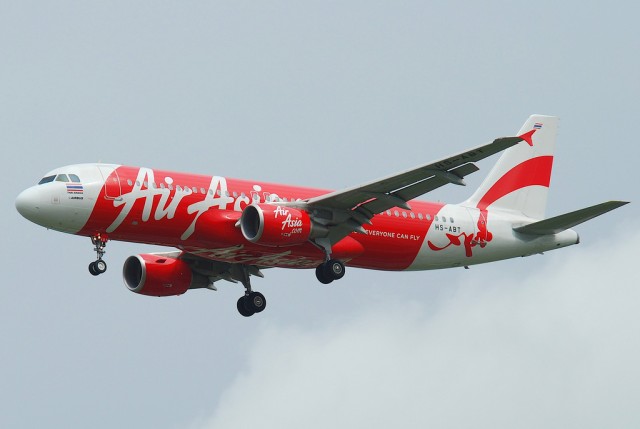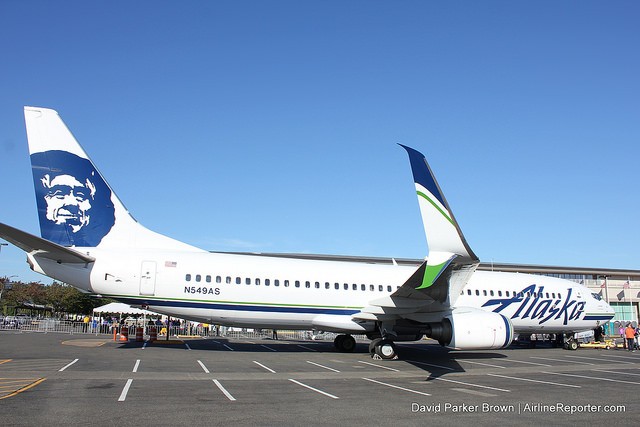
The 737-800, ready to be pulled
Earlier this week, I was invited by Alaska Airlines to watch the Alaska Plane Pull for Strong Against Cancer at the Museum of Flight in Seattle. The two competing teams were led by Russell Wilson, quarterback of the Seattle Seahawks and Alaska’s ’œChief Football Officer,’ and actor and comedian Joel McHale, who grew up on Mercer Island (right outside of Seattle) and is known for his role in the series ’œCommunity’ and as host of E!’s ’œThe Soup.”
Each celebrity captain had 18 team members, comprised of employees from Alaska’s maintenance and engineering departments, as well as members of the community who were the lucky winners of Alaska’s Facebook contest.
Who could pull a 92,000-pound 737-800 25 feet in the least amount of time? I was there to find out!
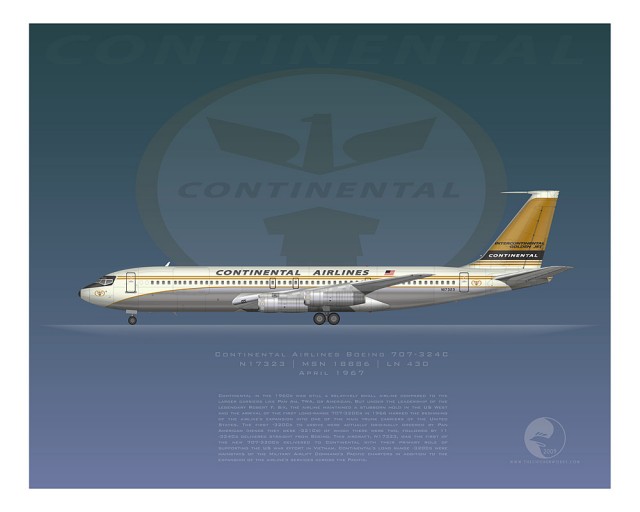
A classic Continental Airlines Boeing 707-300 – Image: JP Santiago
I suppose I was destined to be doing aircraft profile art from a young age. Many of my notebooks and textbooks had aircraft drawings scribbled on the pages and margins, often to pass the time in class. As long as I can remember, I was always drawing airplanes – on the walls of my room, in the margins of a textbook, scraps of paper and a sketchbook here and there, some of which I’m sure are probably tucked away in my parents’ attic to this day.
As a teen, I even took drafting electives to help with my drawings as they began to develop more details and precision. In high school, I had covered the walls of my bedroom with a series of aircraft profiles all to scale — I’m not sure where they are now, but they were done with technical pen and Prismacolor pencils from large aircraft like the Boeing 747 and B-52 Stratofortress, to fighter jets and World War II aircraft. I had a McDonnell Douglas KC-10 refueling a formation of F-4E Phantoms and F-15 Eagles.
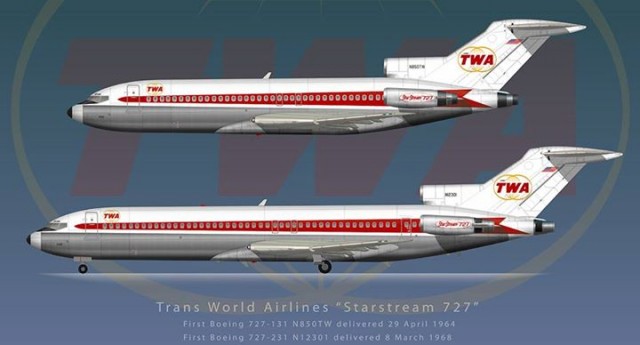
A TWA Boeing 727-100 and 727-200 – Image: JP Santiago
That was probably the start of my interest in “what-if” concepts and unbuilt designs, as there was also a profile of the proposed McDonnell Douglas P-9, a maritime patrol version of the MD-87 powered by unducted fan engines. Through college and medical school I tried my hand at pencil drawings as well, as I was searching for the ideal medium for my artwork. Many of my books were filled with profile art, which I scrutinized, by aviation artist Keith Fretwell.
I was a consummate model aircraft builder (and still am, to some extent, but not to the level of activity that I was before I had kids) which also influenced my own artwork as well. After all, the research I put into a particular model kit had just as much application to my artwork as well. That was probably the first use of the internet for me as an AvGeek.
Around 1993, I discovered the USENET and I’m pretty sure you can find my posts in the rec.models.scale and rec.aviation sections. I still remember my first posting; I was looking for the FS595 colors used for the Mod Eagle camouflage scheme on the F-15 Eagle that was introduced in the early nineties on the Eagles of the Pacific Air Forces before it became standard for the USAF’s F-15 fleet.
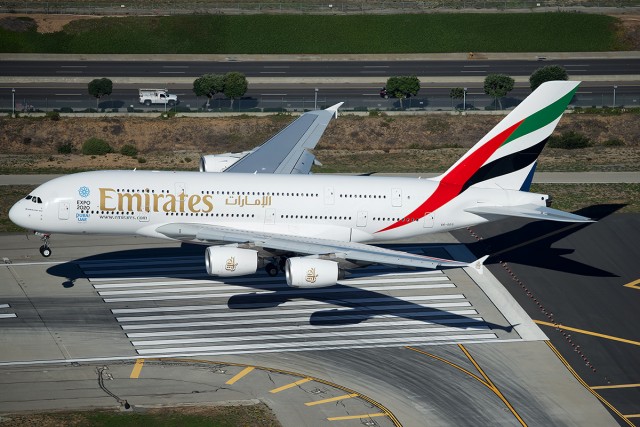
Anywhere from five to ten years from now, the A380 is going to get even better – Photo: Bernie Leighton | AirlineReporter
First things first; I am sick and tired of all the A380 hate. I get it; it’s not made by Boeing and doesn’t fit the U.S. major route network. Here’s the thing: that doesn’t make it a terrible aircraft and an absolute aviation sin.
I am tired of reading comments from people saying, “Since Delta never ordered it, it must be too big.” No one also wants to hear your comments about how the A380 only works for “government-subsidized airlines,” or, “how all the other airlines that operate it regret it.” I’m looking at you, Jeff Smisek.
There are two immediate things I’ve always thought were an issue with the A380…well, maybe two and a half. Things that I have wanted Airbus to fix for a while now. Let’s dive in…
I’ll be the first to admit it. I was naive. I really didn’t think it could get worse than our low-cost carriers (LCCs) here in the U.S. I mean, I’d suffered Spirit’s kneecap-busting 28-inch seat pitch. I’d waited an hour-and-a-half to retrieve my bags from Frontier’s severely understaffed operations at DFW. I’d paid for my carry-on bags, seat assignments, drinks, and everything else imaginable. How bad could it be?
During our recent trip to Thailand, my wife and I wanted to travel from Krabi (KBV) in the south of Thailand to Chiang Mai (CNX) in the north of the country. Although I enjoy different flying experiences, I certainly did not go looking to fly AirAsia. There are several operators offering tickets for this route; however, AirAsia was the only airline flying this particular route nonstop. Wanting to make the most of our limited vacation time, we chose to take the shortest option. The tickets were ridiculously cheap by U.S. standards – about $35 each.
My first hint of trouble came when I tried to check-in online the morning of our flight. I wanted to make sure that my wife and I had seats together and pay for our checked bags. When I logged on, I was able to make these selections, albeit with some trouble. Getting assigned seats cost about 200 Bhat ($6) each.
Our checked bags would have been about 300 Bhat ($9) each. Not bad, and pretty much in line with what I expect from an LCC. But the problem came when I tried to pay. Try as I might, I could not get the system to accept payment without error. So, I tried – again and again – for nearly an hour before giving up. Oh well, I figured we’d get it resolved at the airport. Wishful thinking.
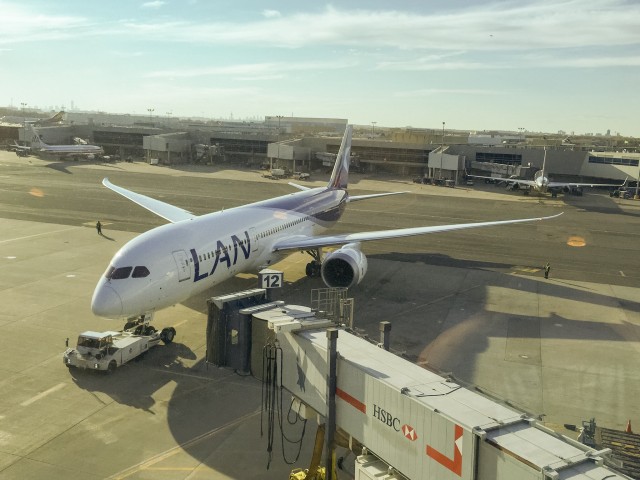
A brand new 787-9, my ride to Santiago, Chile – Photo: Ben Granucci | AirlineReporter
I recently made a trip to Santiago to cover the opening of LAN’s new VIP Lounge. I was pretty excited since this gave me a few firsts. This was the first time that I was invited to do an international trip as media and my first time in South America. This was also going to be my first trip on a 787 of any variant. While the Santiago to JFK route was normally flown by a 787-8 at that time, the night before my flight I discovered that a brand new 787-9 had been swapped in. I was beyond excited!
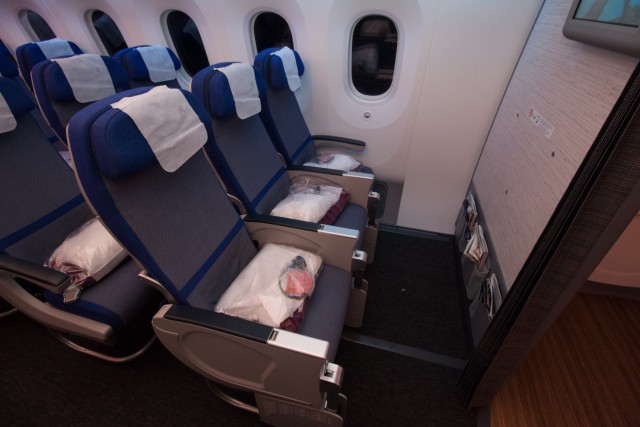
The bulkhead row of seats on LAN’s 787-9 – Photo: Ben Granucci | AirlineReporter
Although I would say that I had a better than average international economy experience, it doesn’t mean that I didn’t encounter some challenges. Some were things that happen just because the complexities of running an airline, but others I think could be updated to improve the overall economy passenger experience.




